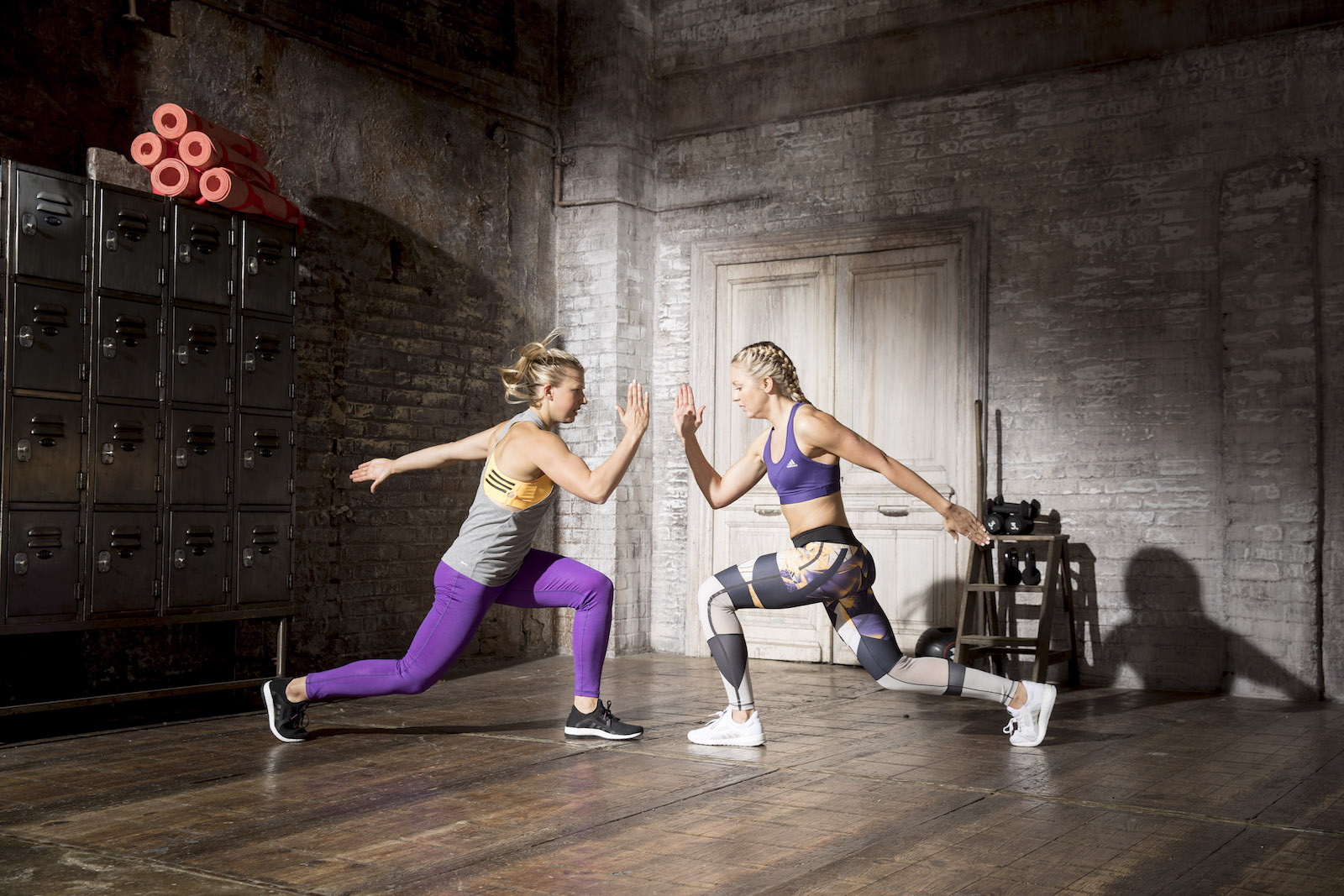Not stretching is something that we had become guilty of. But after four days of hideous leg DOMS (delayed onset of muscle soreness aka don’t even attempt taking the stairs), post heavy leg day, we decided that our lax view towards stretching needed to change! There is really no excuse to not stretch, as we did our post 12mile run stretching on the tube.
Stretching comes in many forms, so where do you start! Stretching is split into two groups; active and passive. Active stretching is when the muscle is elongated using antagonist muscles and without using an external force or object. On the other hand, passive stretching is when an external force such as a wall or person is used to facilitate the stretch.
ACTIVE STRETCHING:
– Static Maintenance; stretched held for 10 to 15 seconds in normal range of movement without bouncing in order to maintain the current length of the muscle
– Static Developmental; slowly progressing the stretch every 10 seconds (or until the tension in the stretch lessens)
– Dynamic; repetitive stretches which involve repeating a stretching movement 10 to 15 times in a controlled manor.
– Ballistic; quick stretching using repetitive bobbing or bouncing motions…use with caution!
PASSIVE STRETCHING:
– Static; same as active but using a partner or object instead of your own body weight or strength.
– PNF (proprioceptive neuromuscular facilitation); a partner facilitates your static stretch for 10+ seconds, you then push against your partner (isometric muscle contraction) for 6 to 8 seconds. The static stretch is then resumed and the range of movement should have been increased. This process is normally repeated 2 to 3 times.
Now a major question is do you limber up pre or post exercise….or both if you’re super keen! We are no super humans and so usually only stretch post exercise. However, it is suggested that stretching should be incorporated into both your warm up and cool down; but the latter is of more importance!
So why do we/should we stretch? Well the primary function is to at least maintain or improve ones flexibility, which in turn reduces the risk of injury. But the benefits are endless really here are some more below:
– Increased range of motion (ROM) and coordination
– Reduced muscle tension and increased physical and mental relaxation
– Reduced risk if joint sprains and muscle strains
– Decreased DOMS
– Improved posture
There have been many studies to test the impact that stretching has on a variety of performance parameters (eg power output, range of movement, speed, endurance etc). A critical review of stretching and performance (Shrier, 2004 – Clinical Journal of Sports Medicine) revealed that one off stretching showed no improvement in 22 out of 23 studies. However, out of the 9 studies on frequent stretching, 7 found an improvement in sporting performance and the other 2 saw no effect.
From this we can assume that there is no detrimental effect of stretching on performance, and if you limber up regularly you may even perform better!
Please take care before taking on vigiourous stretching regimes. We recommend that you see a physiotherapist or a personal trainer first, so you can perfect your technique. Poor form during stretching is worse than not stretching at all and the risk of injury is extremely high! Stretch safe 🙂
TTH x



